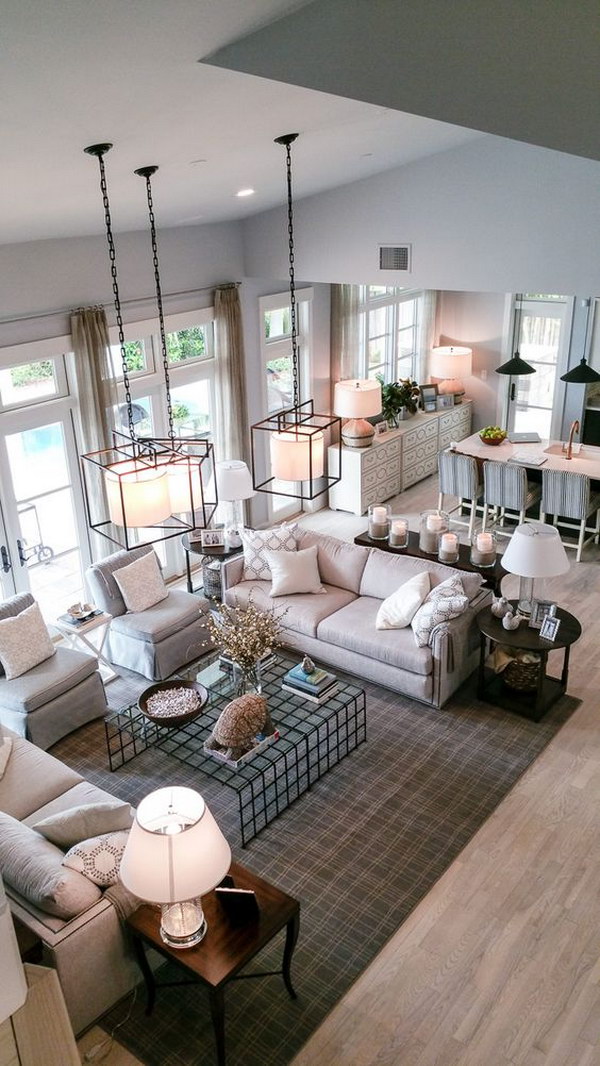Cracking the Code: Decoding Typical Living Room Layouts
The living room: a sanctuary for relaxation, a hub for entertainment, and often the first impression guests have of our homes. But achieving that perfect balance of functionality and style can feel like navigating a maze of furniture arrangements and design choices. Fear not, for understanding the fundamentals of typical living room layouts can be your compass and map, guiding you towards a space that reflects your personality and meets your needs.
Imagine stepping into your living room. What's the first thing you see? Is it a welcoming arrangement of sofas perfect for conversation, or perhaps a cozy entertainment center drawing you in for movie night? The way we arrange furniture in our living rooms isn't arbitrary; it's a reflection of our lifestyles, priorities, and how we want the space to feel.
Historically, living rooms were formal spaces reserved for receiving guests, often filled with ornate furniture and delicate décor. However, the 20th century saw a shift towards more casual and multifunctional living spaces. Open-plan concepts emerged, blurring the lines between living, dining, and even kitchen areas. Today, typical living room layouts cater to a wider range of activities, from casual family gatherings to dedicated work-from-home zones.
The challenge lies in finding the right balance between aesthetics and functionality. A beautiful living room that lacks comfortable seating or adequate lighting won't be enjoyable for long. Similarly, a purely functional space without a touch of personality can feel cold and uninviting. This is where understanding the nuances of typical living room layouts comes into play.
Before diving into specific layouts, it's important to grasp the core principles that underpin successful living room arrangements. First and foremost is flow. Imagine invisible pathways within your living room that guide movement between seating areas, entryways, and other functional zones. Furniture placement should facilitate smooth traffic flow, avoiding cramped or awkward pathways.
Advantages and Disadvantages of Typical Living Room Layouts
| Advantages | Disadvantages |
|---|---|
| Familiar and easy to implement | Can feel generic or uninspired |
| Often maximize seating capacity | May not cater to specific needs or room shapes |
| Can be budget-friendly to furnish | May limit creativity in design expression |
Best Practices for Implementing Typical Living Room Layouts
1. Prioritize Conversation: Arrange seating to encourage face-to-face interaction, creating a welcoming atmosphere for social gatherings.
2. Define Zones: Use rugs, furniture placement, or lighting to delineate distinct areas within the living room, such as conversation zones, reading nooks, or workspaces.
3. Balance and Symmetry: Aim for a balanced and symmetrical arrangement, especially in formal living rooms, to create a sense of order and harmony.
4. Consider Traffic Flow: Ensure ample space for movement between seating areas, entryways, and other functional zones within the room.
5. Layer Lighting: Incorporate a mix of ambient, task, and accent lighting to create depth, ambiance, and functionality.
Common Questions and Answers About Typical Living Room Layouts
1. What is the most popular living room layout?
The most popular living room layout often centers around a focal point like a fireplace or entertainment center, with seating arranged to maximize views and conversation.
2. How do I arrange furniture in a small living room?
Maximize space in a small living room by using multi-functional furniture, opting for lighter colors, and incorporating mirrors to create the illusion of spaciousness.
3. How can I make my living room layout more interesting?
Inject personality into your living room by incorporating unique furniture pieces, bold accent colors, or statement artwork. Don't be afraid to experiment with different textures and patterns to add visual interest.
Tips and Tricks for Typical Living Room Layouts
- Use painter's tape to visualize furniture placement before committing.
- Incorporate plants to add life and freshness to the space.
- Don't be afraid to break traditional layout rules to create a space that reflects your personal style.
In conclusion, while the concept of "typical" living room layouts might initially seem limiting, it's essential to recognize them as a framework for creativity. Understanding the fundamentals of flow, balance, and functionality empowers us to make informed design choices that transform our living rooms into spaces that are both beautiful and practical. By embracing our personal style and adapting these principles to our unique needs, we can unlock the true potential of our living spaces, creating welcoming havens that reflect who we are and how we want to live.
Unlocking the world of juan the duck drawings
Groovy threads unleash your inner disco queen with 70s 80s retro outfits
Deconstructing the sweet dreams meme song phenomenon














